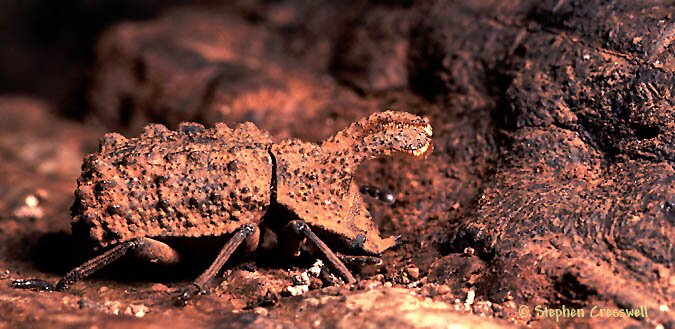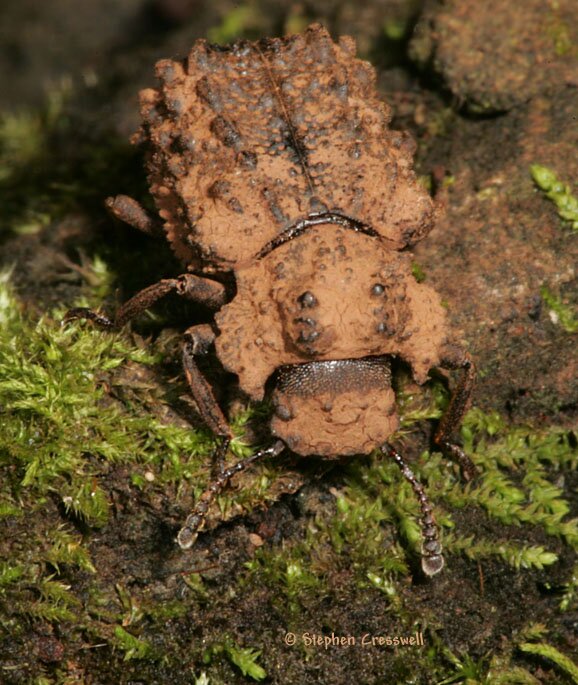
Family: Tenebrionidae
Subfamily: Diaperinae
Length: 10-12 mm
You might want to begin with this article about early research in Forked Fungus Beetle behavior, excerpted from the book Stalking the Vesper Bluets.
 More recent research has revealed that Bolitotherus cornutus is a long-lived species, with a life span of up to five years. A particular colony in a patch of shelf fungus lasts an average of about nine years, with the shelf fungus then dying and the beetles moving on to new patches.
More recent research has revealed that Bolitotherus cornutus is a long-lived species, with a life span of up to five years. A particular colony in a patch of shelf fungus lasts an average of about nine years, with the shelf fungus then dying and the beetles moving on to new patches.
Males have horns that vary considerably in size. Researchers have shown that under laboratory conditions males with bigger horns mated more often than those with smaller horns. But if two males were each tethered to limit their movement, and a female had free choice of a mate, the horn size was unimportant.
In real-life situations (without tethers!) , the larger-horned males seemed more successful in mating because they bested the small-horn males in physical competition, or intimidated them.
Bolitotherus cornutus was first described in the scientific literature in 1794. From the next 205 years, in the many articles published about this species, no one mentioned its ability or inability to fly. Most researchers seemed to presume when a shelf fungus died (often as a result of these beetles feeding) the beetles walked to a new shelf fungus. In 1999, though, researcher Sonja Teichert wrote up the "First Reported Flight of Bolitotherus cornutus." She reports:
"On 10 July 1997 at approximately 11:15 p.m., a male which seemed particularly active, walked around the top of a polypore in circles, pausing periodically to lift the anterior part of its body. After repeating this behavior for about 3 minutes, it opened its elytra, extended its wings, and flew into the wall of the terrarium."
Tichert's report supported the 1997 musings of T.A. Lundrigan, who had seen marked beetles of this species move 171 meters in two days. Lundrigan concluded it was not realistic to think these small beetles had walked that distance in that time.
Jeffrey Conner, Thomas Eisner, and colleagues in 1985 published their explanation of Ann Pace's observation that although Boltiotherus cornutus has a noxious chemical it can secrete to repel predators, it seemed to expel this chemical only when she blew on a beetle. The explanation is that beetles respond to the carbon dioxide in mammals breath. If, for example, a mouse picked up the beetle in its mouth, the beetle responds to the high carbon dioxide levels by releasing the irritant chemical. On the other hand, the researchers observed that if the beetle was attacked by an ant, it simply relied on its hardened exoskeleton to ensure the attack was fruitless. In some cases mammals may be eating the fungus rather than the beetle itself, but the noxious chemical will still induce the mammal to drop the fungus, beetle and all.
Bolitotherus cornutus is widespread around the Mountain State, and will be in or near its shelf fungus host all year round, as egg, larva, pupa, or adult.


